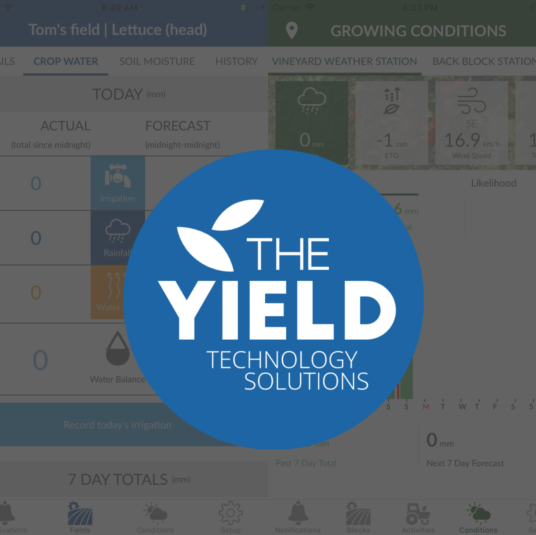The Yield is an Australian agricultural tech company transforming farming and food practices via digital tech. Its flagship product, Sensing+, uses Internet of Things (IoT), data analytics and artificial intelligence to provide highly localised information and predict local growing conditions. The vast quantity of data comes from its farm microclimate sensors using IoT technology and from external weather data sources. The Sensing+ product accesses the combined data via cloud services hosted in Microsoft Azure and delivers information directly to growers via its user-friendly app.
Objective: Create an Android app with minimal business impact
Originally available only on iOS, the plan to develop an Android version was expedited by a key customer’s request. However, time was an issue, according to The Yield’s Product Development Manager, Helen Mihelic.
“It was going to take us a long time to do, because the original was built using Xamarin native code for iOS. Developing the Android version required significant effort. And our internal team had other, equally urgent, projects to complete,” she said.
The Yield team decided to outsource the Android project.
A development partner with an innovative approach
In their search for the right development partner, The Yield team contacted a number of development houses. The recommendation to include Built to Roam in the mix came from one of The Yield’s business advisors.
But the ultimate decision came down to one key factor.
“Built to Roam were the only people forward-thinking and confident enough to propose the cross-platform approach. Everyone else said it wouldn’t work,” said Helen Mihelic.
Built to Roam created the Sensing + app for Android in Xamarin.Forms, thus enabling the future sharing of business logic and user interface across both Android and iOS. A couple of months after the Android app was completed, The Yield updated the iOS app using the same codebase.
“To us, this approach just made sense. The ongoing benefits – streamlining future updates and minimising maintenance costs – are very important,” said Helen Mihelic.
The cross-platform model delivers ongoing benefits
Working with Built to Roam enabled The Yield to accelerate development of the Sensing + app for Android, streamline their processes and – with the update of the iOS version of the app to the same codebase – realise ongoing synergies. These business benefits include:
- Significant savings on ongoing app management. New features, upgrades and tweaks are easily performed across both platforms. The value already extends beyond business-as-usual maintenance.“If we had to code each feature twice – once for iOS and again for Android – it would take significantly greater effort,” said Helen Mihelic. “Having the one codebase is less complex, and more efficient. Without it, any one feature would have to be added in both platforms. If I had to estimate the savings across updates, I’d say it’s around 50%.”
- Enhanced customer experience. The Yield is now able to service a new segment of the market while its internal development team can focus on new features and app improvements. “Our own team can now be pro-active in their work, as opposed to duplicating their effort for a different user base,” said Helen Mihelic.
- An automated app build and distribution process. The Yield’s developers no longer have to manually create new app releases – which was both time consuming and high risk. Built to Roam helped the team to establish an automated process for build and distribution, allowing the application to be released to both testers and the App Store without any manual intervention.“The DevOps model we helped The Yield establish results in greater product stability throughout the development process and means that tests and updates can be run much more frequently,” said Nick Randolph, Technical Lead at Built to Roam.
- New skills for the internal development team. Build to Roam helped to upskill The Yield team in the new technology and to adapt it internally. “The ongoing maintenance is done by our internal team,” said Helen Mihelic. “Built to Roam transferred the code and trained us on the new Xamarin.Forms-based app. Our internal team was very happy with it and with the quality of the code.”
Advice for other companies
Does Helen Mihelic have any advice for other companies experiencing similar challenges with their apps?
“Go to market and see what’s out there,” she said. “But definitely throw Built to Roam into the mix. We found them to be smart and innovative. They’re also easy to work with and very transparent and collaborative. We’re very happy with the ultimate outcome.”
Looking to the future
The Yield value their relationship with Built to Roam and plan to work with them on future projects. “We see them as trusted partners we can go to if we need guidance,” said Helen Mihelic. “They really know their stuff.”

